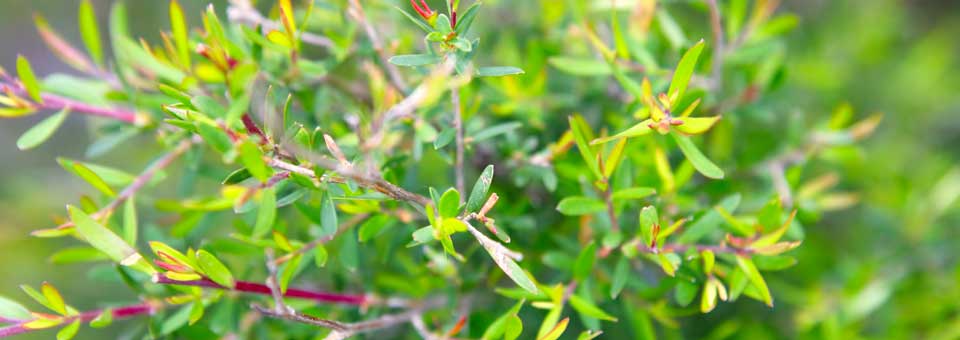
If you’ve never had a yeast infection, brace yourself… it’s probably just a matter of time.
A full 75% of women have had at least one in their lifetime. But recently, I’ve been seeing more and more women who are getting yeast infections four or more times in a single year.
Yeast can be a real problem for some women. But it’s a problem that can quickly be fixed with natural cures.
I’ll tell you more about those in just a minute, but first I want to explain what’s really going on in your body…
A lot of the women who come to my clinic don’t experience their first yeast infection until they hit menopause. That’s not surprising to me…
You see, menopausal and postmenopausal women are especially susceptible to yeast. That’s because in today’s world, women are exposed to tens of thousands of “alien estrogens” in the environment. These are chemicals that are found in everything from shampoo to cookware. And they cause your hormones to go out of whack.
You end up with an overload of estrogen. It’s a condition called “estrogen dominance.”
The fake estrogens actually alter your DNA and interfere with normal cell signals.
And they also upset the healthy balance between good bacteria and yeast in your body. Let me explain…
Yeast infections crop up when a natural yeast in your body called Candida albicans gets out of control. Lab studies show that high estrogen increases the growth and survival of candida.
The cells in the vagina have an immune system of their own. Low estrogen levels actually protect against infections. But high estrogen lowers immunity. So when your estrogen levels are high, candida can take over.
But estrogen is only part of the equation. The other part is progesterone. And at menopause, most women have very little progesterone. Some of my patients have close to zero.
Here’s why that matters when it comes to yeast infections…
Studies show that progesterone suppresses certain genes in the candida cells. It reduces the ability of candida to establish an infection in the vagina. In other words, progesterone keeps candida in check.
I’ve found that when I’m able to help women restore a proper balance of estrogen and progesterone, the infections go away.
But I don’t use Big Pharma’s synthetic hormone replacement (HRT) drugs. They can cause yeast infections. Studies show 26% of postmenopausal women using HRT had yeast infections compared to only 4% of women who didn’t.3
Instead, I offer my patients Bioidentical Hormone Replacement Therapy (BHRT) with natural hormones identical to your own. I start by measuring estrogen and progesterone to give me an exact formula for your body. That’s why BHRT is only available through a doctor.
If you’re in South Florida — or can travel to the Sears Institute for Anti-Aging Medicine — you can arrange for a consultation. Call my staff at 561-784-7852. Or visit my website at www.searsinstitute.com.
But there are remedies you can use right at home to blast Candida, without using Big Pharma’s drugs.
3 easy ways to beat yeast
1. Use topical tea tree oil to kill Candida. Australian Aborigines have used this essential oil for hundreds of years to treat infections, insect bites and wounds. It’s one of the best antifungal and antibacterials I’ve come across.
Tea tree oil effectively stops the Candida in its tracks by blocking its ability to replicate and grow. In one study, it was able to block Candida’s ability to attach itself to human cells.4Another study found that it killed 14 different kinds of Candida albicans strains that were resistant to Big Pharma’s yeast infection drug fluconazole.5
Tea tree oil is powerful and a little goes a long way. Mix five drops of the oil with one tablespoon of aloe vera gel. Clean and dry the affected area thoroughly. Apply twice a day until the infection is gone.
2. Destroy candida with coconut oil. Coconut oil has natural anti-fungal agents. They rupture the membranes of the Candida albicans cells. One animal study showed adding coconut oil to the diet destroyed 90% of the candida infection within just seven days.6Another study even found coconut oil to be more effective than prescription medications.7
I recommend it as a topical treatment. Apply a thin layer of coconut oil to the infected area. Repeat two to three times a day.
3. Knock out candida with Pau D’Arco. This South American tree bark has powerful antibacterial and antifungal compounds. But they won’t harm the friendly bacteria in your body. I recommend a 500 mg supplement taken two or three times a day.
To Your Good Health,
![]()
Al Sears, MD, CNS
1. Xiaoqian Zhang, Michael Essmann, Edward T. Burt, and Bryan Larsen. “Estrogen Effects on Candida albicans: A Potential Virulence-Regulating Mechanism.” The Journal of Infectious Diseases, 2000; 181:1441–6.
2. Wira, C. R., Fahey, J. V., Ghosh, M., et al. “Review Article: Sex Hormone Regulation of Innate Immunity in the Female Reproductive Tract: The Role of Epithelial Cells in Balancing Reproductive Potential with Protection against Sexually Transmitted Pathogens.” American Journal of Reproductive Immunology, 2010; 63: 544–565.
3. Spinillo, A., A. Bernuzzi, C. Cevini, R. et al. “The relationship of bacterial vaginosis, Candida and Trichomonas infection to symptomatic vaginitis in postmenopausal women attending a vaginitis clinic.” Maturitas 1997; 27:253-260.
4. Sudjana AN, et al. Candida albicans adhesion to human epithelial cells and polystyrene and formation of biofilm is reduced by sub-inhibitory Melaleuca alternifolia (tea tree) essential oil. Med Mycol. 2012 Nov;50(8):863-70.
5. Mondello F., et al. “In vitro and in vivo activity of tea tree oil against azole-susceptible and -resistant human pathogenic yeasts.” Journal of Antimicrobial Chemotherapy. (2003) 51, 1223–1229.
6. Gunsalus KTW, Tornberg-Belanger SN, Matthan NR, et al. “Manipulation of host diet to reduce gastrointestinal colonization by the opportunistic pathogen Candida albicans.” mSphere 2015;1(1):e00020-15.
7. Ogbolu, D.O., et. al. “In vitro antimicrobial properties of coconut oil on Candida species in Ibadan, Nigeria.” Journal of Medicinal Food 2007; Volume 10: 384-387, No. 2.








